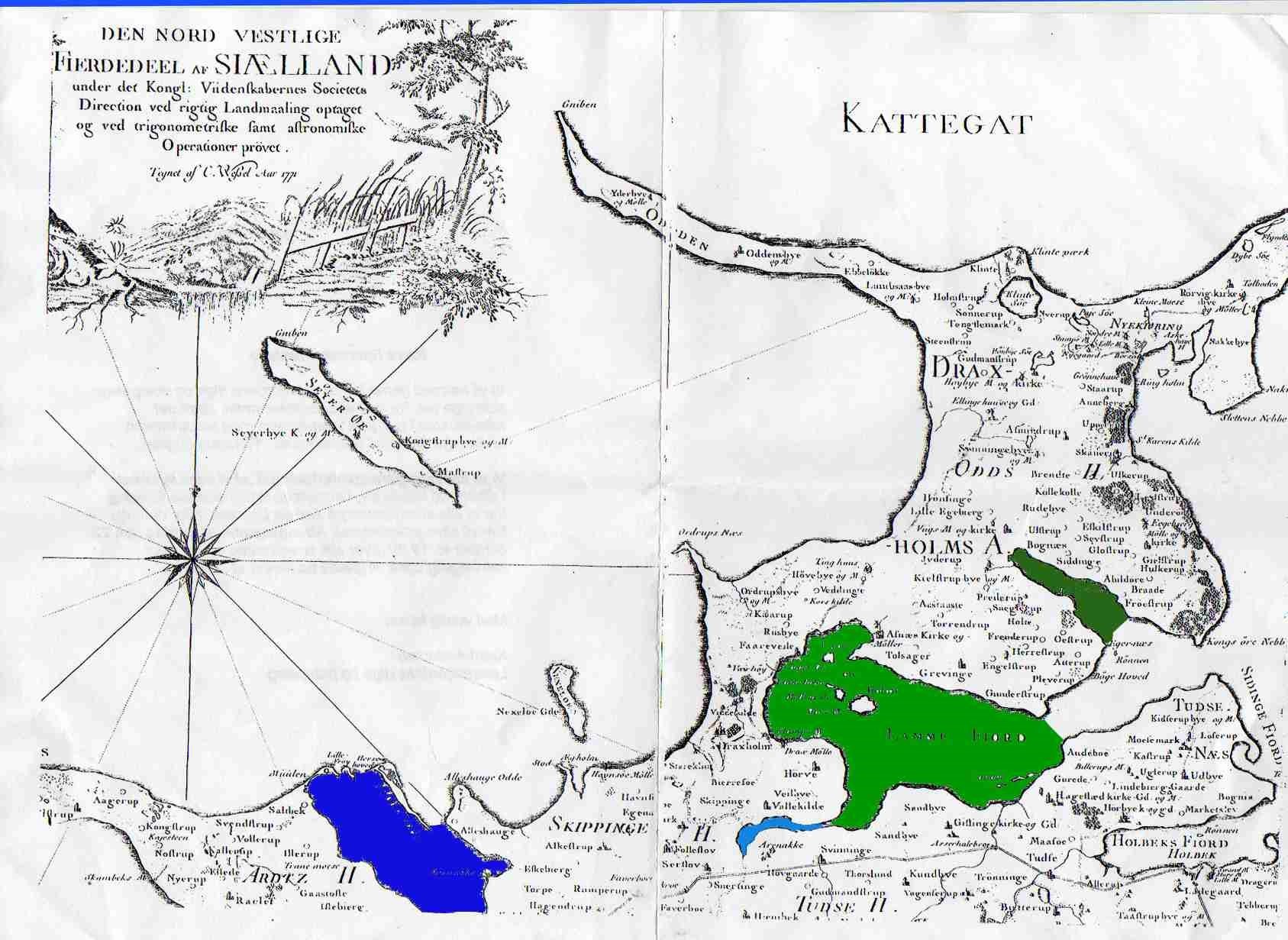Lammefjorden 1873
It was during the mid-19th century that the idea of reclaiming land from the sea largely transpired.
The Netherlands, especially, were responsible for the reclamation of enormous areas of land corresponding to an area larger than the island of Zealand. Many areas in Denmark were also reclaimed at this time.
Facts about Lammefjorden and
Watch video
- Today,
Lammefjorden with its 5,500
ha. (equivalent to 10,000 football pitches) is Northern
Europe’s largest reclaimed area. --- (Green
color) 
- It has an approximately 40 km. long ring channel with ditches and over 50 km. of open and piped streams.
- The Audebo dam is 2,200 metres long and has two locks that act as drains for the ring channel. Futhermore, there is a third lock to the west of Nekseløbugt.
- Today about 3,246 people live on the former fjord bed at a level of between 0 to minus 7,5 meters below sea level.
- In April 1873 the actual Lammefjord reclamation project began with Lensbaron G. F. Zytphen Adler from Dragsholm as the initiator.
- In September 1874 the Audebo dam was completed and in January 1875 the pumping began. Six months later the water level was lowered by 2.7 metres leaving a large lake, which subsequently became the focal point of the so-called fishing war, where some of the local residents would not accept a fishing ban on the lake.
Workers on the project
At the beginning of the reclamation project in the mid-1870s, there was a workforce of several hundred men. Many of the workers were casual workers and came from all over Denmark. Some had previously worked, for example, on the railways, while others came from the Jutland lignite mines. They were usually people from poor backgounds. Although it was not permitted, alcohol was consumed by many of the men to help them endure the backbreaking work (between 13-15 hours a day), the poor housing conditions and the lousy wages (1-2 kr. per dag).
The pump station
- Around 1874-75 a machine building was built near the Audebo dam for the five steam engines, six boilers and ten augers that were to be used to pump the Lammefjord dry.
- At the beginning of 1900 three windmills were added.
- After a big storm in 1921 two new, large wind engines were being used. In the long run, however, the wind engines were too unstable and weather dependent.
- A new pumping station was built in 1926 and an electric centrifugal pump (at the time the largest in the country) replaced the old steam engine. The pump is still active today.
- In 1939 the pumping station was expanded and two new electric pumps were added. These were replaced in 2004 and together their replacements can pump 14,000 m3 of water per hour with a lifting height of 7,5 metres. If there is a lot of water, the old pump from 1926 can also be used, which gives an additional 6,000 m3.
- In 1943 the ’Lammefjordslake’ was finally emptied and the Lammefjord was completely dry. The last stage, cultivation, could now begin. However, some of the land was not suitable for cultivation, for example, large areas around Audebo. Today, much of the privately owned areas lie undisturbed and are used primarily for rough shooting.
Today, the Lammefjord is especially famous for its potatoes, carrots (800 million a year), asparagus and other vegetables, all of which are used in the new Nordic Kitchen.